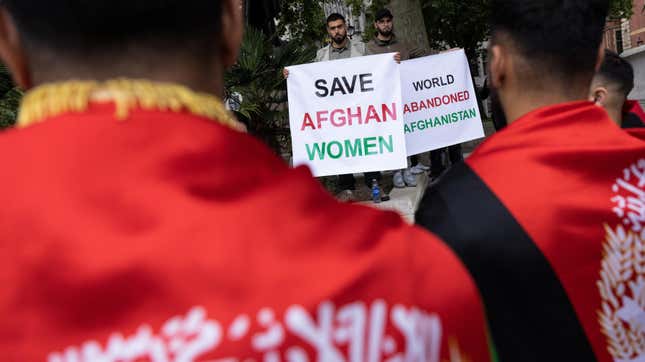Women in Afghanistan Will Continue Paying the Price
Western imperialism doesn't safeguard Afghan women, but prominent American feminists have made this argument to justify invasions
NewsPolitics

“The War on Terror, at least in theory, was America’s first ‘feminist’ war,” Rafia Zakaria writes in her book, Against White Feminism. Nowhere has this been more evident than in Afghanistan, where the United States was able to rally support for an invasion and subsequent occupation by using Afghan women and girls as bargaining chips to appeal to wealthy white feminists. By using the image of the poor Afghan woman, lobbyists, politicians, and well-to-do NGO presidents were able to paint a portrait of America the savior, flying into Afghanistan to “liberate” women and girls from the men of their country by employing the American ideal of that term.
Lawmakers readily embraced this logic, without a shred of thought to the actual needs of the communities in Afghanistan, by continuing to push the narrative that women and girls were not just oppressed by men but by their own culture, a culture that members of Congress didn’t understand or care to understand. In 2001, Rep. Carolyn Maloney delivered a speech on the house floor clad in a Burka, a traditional garment worn by some Muslim women. The stunt was meant to illustrate the ways in which the Taliban had stripped Afghan women of their freedom by forcing them to cover their bodies and limiting their access to education. Nowhere in Maloney’s speech was there mention of the role the U.S. played in destabilizing Afghanistan and arming the rebels that would eventually become the Taliban.
-

-

-

-

-

-

-

-

-

-

-

-

-

-

-

-

-

-

-

-

-

-

-

-

-

-

-

-

-

-

-

-

-

-

-

-

-

-

-

-








































